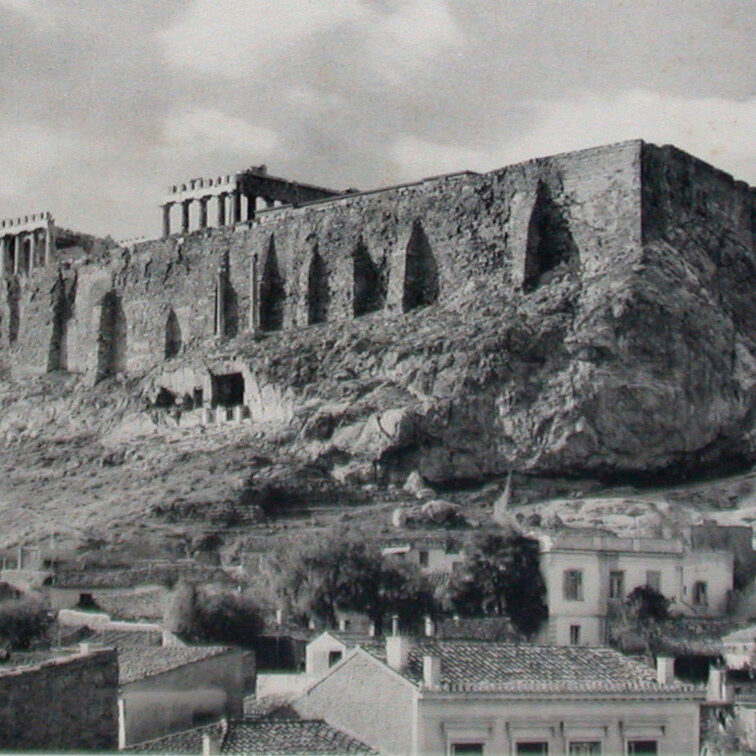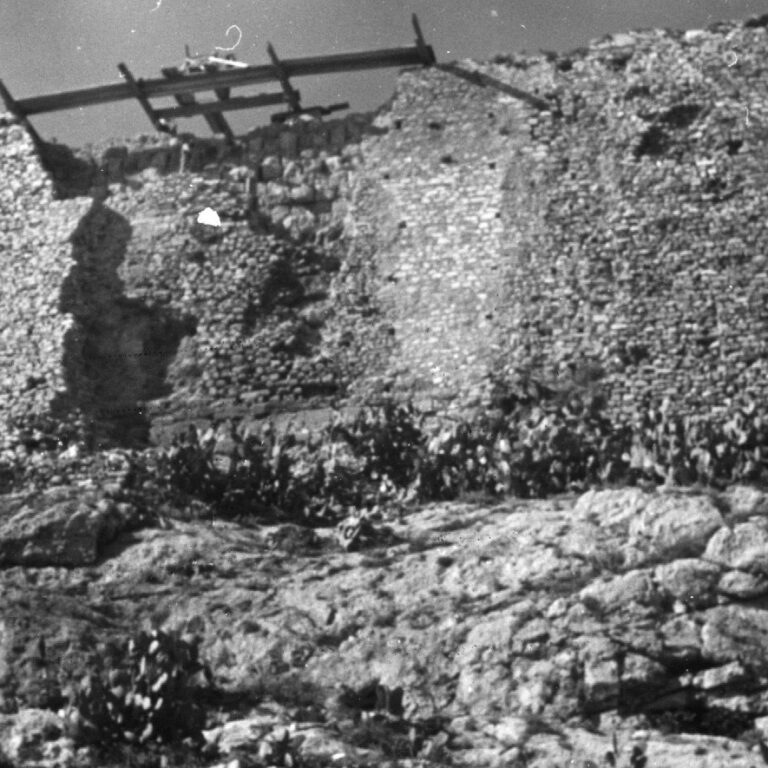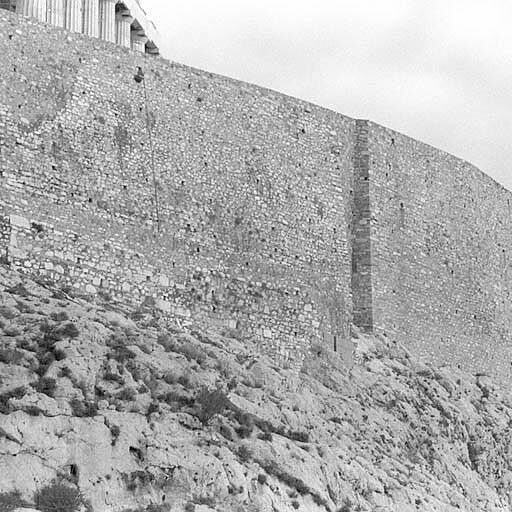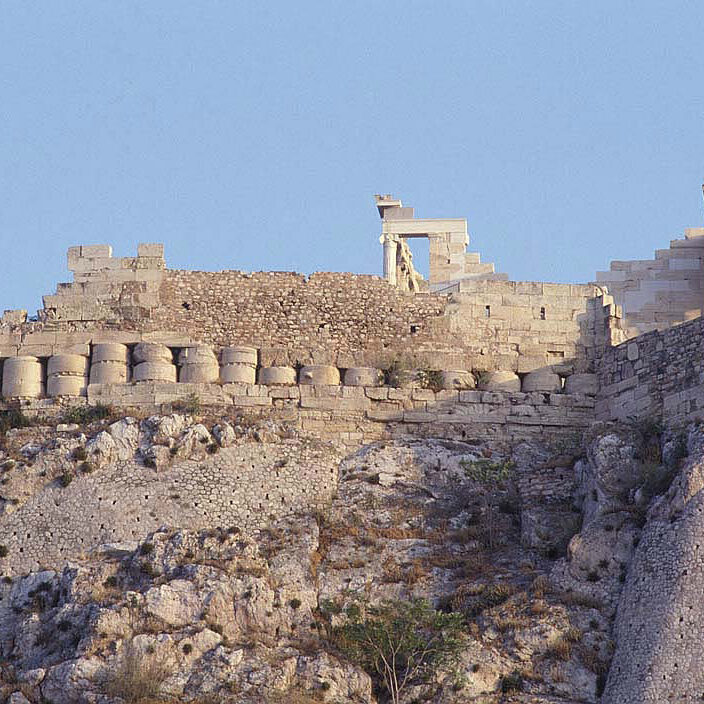
The construction of the circuit walls was one of the first works undertaken on the Acropolis as part of the extensive building programme of the 5th century B.C. Particularly strong supporting walls were built in the circumference, around the destroyed Mycenaean Wall, for a length of 740 meters, so as to support the heavy fill and to create a new raised terrain for the construction of the sanctuaries. The Acropolis surface was expanded, while the uneven surface of the rock was terraced, acquiring an area of 29,000 sq. m.
The north fortification wall with its characteristic recessed surface, known generally as the “Themistoclean Wall”, was one of the first works to be carried out after the Persian Wars. Architectural members of the ruined sanctuaries were used as building material in its construction: marble blocks from the crepis of the destroyed pre-Parthenon, 26 half-finished unfluted marble column drums, poros column capitals from the “Archaios Naos” (Old Temple), members of the entablature (architrave blocks, triglyphs, metopes and cornice blocks) were laid in a continuous row as crown blocks on the wall. Preserved today is most of the ancient construction, which has been partly filled in with rubble masonry, in recent repairs.
The south fortification wall, known as the “Kimonian Wall”, was built after the victory in the naval battle of the Eurymedon (466 B.C.). Today it is difficult to discern the original monumental construction on the outer face, since the façade comprises for the most part irregular, mixed courses, made up of marble and small stones, added in later repairs. Despite the change in its outer appearance, the core of the wall has remained authentic and its outline gives a general picture of its ancient form. The south wall is constructed for its full width of large rectangular quarried poros blocks, laid in horizontal courses in the isodomic system, together with reused building material.
The east fortification wall has for the most part been reconstructed in more recent times, after collapsing, probably in a severe earthquake of the 18th century.
During the long, turbulent history of the Acropolis, the circuit walls were repaired again and again. As part of the repairs in mediaeval times, two tall towers were erected on the south and east sides. The eastern one is generally known as the “Belvedere”. A row of buttresses against the eastern and southern parts of the walls belong to this same time.
In the 19th century, during the first programme for the restoration of the Acropolis monuments, most of the additional fortifications were removed, the ramparts taken down and a parapet was added to the top of the wall. Between 1899 and 1940, N. Balanos carried out consolidation works.




